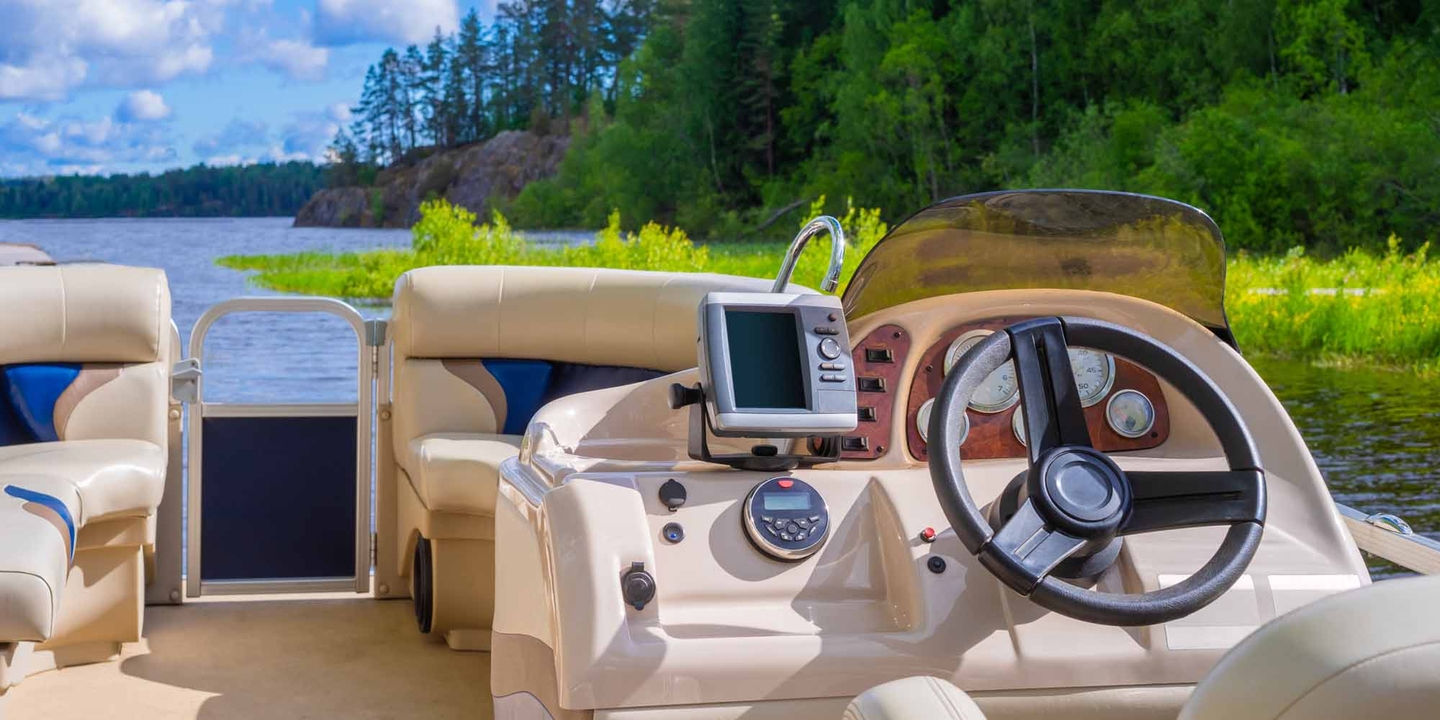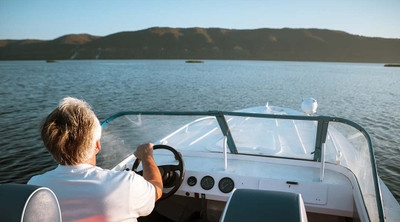How to drive a boat
4 min read
Whether you’re new to boat ownership, still in the shopping phase, or taking the wheel of a friend’s watercraft, learning to drive a boat confidently and safely is an essential first step. Like learning to drive a car, what you need to know depends on the vehicle you want to operate.
Watch the video for a quick, visual tutorial on driving a boat, and read on for more tips for boating for beginners.
Steps to learning how to drive a boat
1. Pre-departure
States have varying laws when it comes to minimum age restrictions and boating education requirements for operating a boat or personal watercraft (PWC) on state waters. Boats.net has a directory of boating rules and regulations by state. If you live in a state that requires a boating license, according to Boat-ed.com, you must have your boater education card available for a law enforcement officer to inspect. You may also need to pass a boating safety course to qualify for a boating license.
Only a few states require boat insurance, but your marina may mandate proof of a boat insurance policy. If you finance your watercraft, your lender may also require you to carry boat insurance. A boat insurance policy may pay for damages to your watercraft caused by events out of your control. Boat insurance can also cover you if you’re liable for someone else’s injuries or damages while on the water.
Before you leave the dock, make sure to have your boat safety equipment on board, including life jackets for every passenger, and check the weather forecast.
2. Take-off
After you’ve checked your emergency gear, prepared the kill switch, and cast off your lines, you’re ready to take off. Assuming you’re learning to drive a powerboat and not a sailboat, start the boat’s engine and either drive the boat forward or backward, depending on what direction you’re facing. Once you’re clear of the dock, you’re ready to start driving your boat.
3. Piloting
This is the part most people consider when wondering how to drive a boat. Here’s how to turn a boat left or right. Once you’re out on the open water, steering the boat — regardless of whether you want to turn the boat left, right, or keep going straight — is simple. Turn the tiller (steering wheel) in the direction you want to go as you would with a car. The big difference in driving a boat is that there are no brakes, so you must learn how long it takes your boat to stop.
Practice pulling the throttle back toward neutral and let it gradually slow down. When you’re out on the open water with no other boats around, you can try this out to see how your boat reacts and get a real sense of how long it takes to slow down or stop. Research boating etiquette, which includes the general rules of operating a boat and interacting with other vessels and boaters on the water.
Learning to sail fundamentally differs from learning to drive a powerboat. In sailing, you adjust the sails to control the effect of wind on your boat. Learn more about the difference between sailboats vs. powerboats.
How to drive a boat with an outboard motor
Power or motorboats have a motor mounted either in the center or hull of your boat (inboard) or on the boat’s transom sitting at the back of the vessel (outboard). Inboard motors offer good fuel economy and a more stable ride but are often less agile than outboard motors. Here are the basic steps to help you get started driving an outboard motorboat:
- Prepare the boat: Before you start the motor, ensure the boat is secured correctly and all the passengers are seated. In addition, ensure that the fuel tank is full and that you have all the necessary safety equipment.
- Check the controls: Verify that the throttle, gear shift, and steering controls are working. In addition, ensure that the engine cut-off switch (kill switch) is functioning.
- Prime the engine: If you have not used the boat in a while, pump the fuel bulb until it feels firm.
- Start the engine: Insert the key and turn the engine to the “on” position. Next, pull the starter cord or use the electric starter (if available) to start the engine.
- Warm up the engine: Let the engine warm up for a few minutes before engaging the throttle.
- Driving the boat: Shift the engine into gear once the engine runs smoothly and slowly increase the throttle. Keep an eye on the boat’s speed and direction. Adjust the throttle and steering as needed.
- Steering an outboard motor: To steer the boat, you turn the tiller handle in the opposite direction you want to turn. To control the boat’s speed and direction, adjust the throttle up or down to increase or decrease speed.
- Consider environmental factors: When driving an outboard motor, it is essential to consider the effects of wind, the water’s current, and other environmental factors that will affect the boat’s direction and stability. Then, constantly adjust your steering and throttle to maintain control of the boat
4. Docking
When you return to the marina, you must have a good idea of your boat’s stopping distance. When it’s time to slow the boat down, pull the throttle to neutral, wait for a few seconds, then switch into reverse. Putting the motor in reverse runs the propeller backward, slowing the boat more quickly than moving into neutral and waiting for the boat to stop itself.
How to navigate large waves in a small boat
While it’s best to go out in good weather, you will pilot your boat in choppy seas sooner or later. If you’re facing big waves, steer toward the smallest part of the wave. According to Boatingmag.com, it’s tempting to steer away from the wave, but it’s easier to tip a boat sideways than front to back, so take the wave head-on.
Driving a boat can be fun once you have learned how to operate your vessel with the safety of yourself, your passengers, and the other people on the water in mind.




